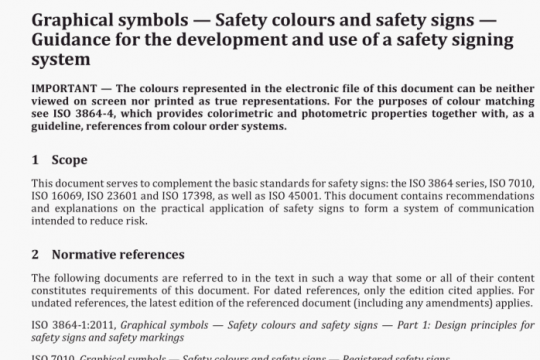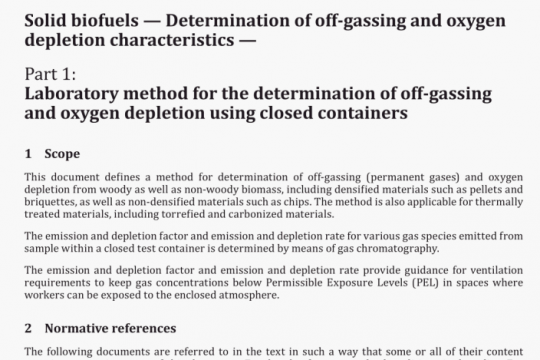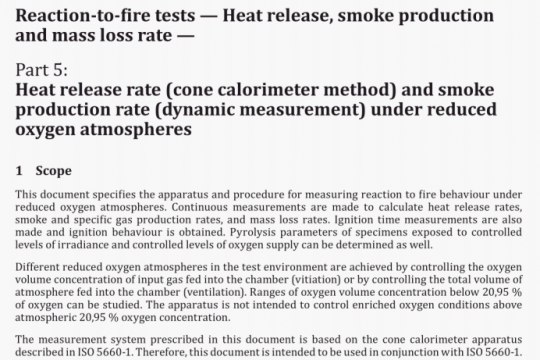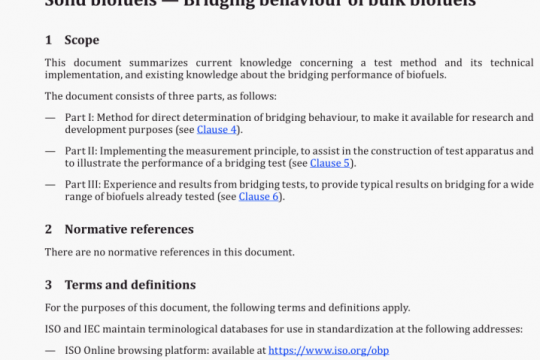ISO 17278 pdf free download
ISO 17278-2020 pdf free download.Rubber, raw natural – Determination of the gel content of technically specified rubber (TSR).
6.1 Laboratory centrifuge, capable of rotating at a minimum of 14 000 r/min (revolutions per minute).
If the above speed cannot be attained a minimum speed of 8 000 r/min may be used with a longer running time (L2A).
NOTE When the centrifugal rotational frequency (rotational speed) is 14 000 r/min, the gravitational acceleration is 22 000g. When the centrifugal rotation speed is 8000 r/min, the gravitational acceleration is 7 000g.
6.2 Screw-cap centrifuge tubes, with a minimum capacity of 30 cm3, capable of withstanding the centrifuge conditions and of being heated to a temperature greater than 110 °C.
6.3 Balance, capable of accurately weighing to ± 0,1 mg.
6.4 Laboratory oven, gravity convection type, capable of controlling the temperature to ± 10°C.
6.5 Weighing container, i.e. an aluminium box or plate for weighing.
7 Conditions
Laboratory conditions shall be controlled in accordance with ISO 23529.
8 Procedure
8.1 Number of test samples
Two test samples shall be taken in accordance with Clause 7 of ISO 2000:2014.
8.2 Procedure
8.2.1 Take a test sample from a bale without milling of mass calculated at the ratio of 0,1 g per 30cm3 of toluene.
NOTE When the volume of a centrifuge tube Is 50 cm3, the volume of toluene Is 30 c& (see 82.3), and the sample weight is 0,1 g.
8.2.2 Cut the test sample into approximately 1 mm3-sized pieces using clean scissors. Weigh the prepared test pieces to the nearest 0,1 mg (mj. Place the pieces in a clean centrifuge tube (62), which has previously been heated at 100 °C for 1 h and stored in a desiccator.
8.2.3 Add toluene to the tube until it is 60 % full. Cap it and shake by hand for a few seconds. Then, allow it to stand for 16 h to 20 h in dark conditions without stirring at (25 ± 2) °C.
8.2.4 Alter this period, shake the tube up and down [or 60 s to disperse the jelly-like precipitate on the bottom.
Before placing the tubes in the centrifuge machine, all tubes shall be filled up with fresh toluene, so that the volume of solution is the same in all tubes.
NOTE A centrifuge tube is usually filled up with solution to minimize the dead space created at the top of the tube because of the vacuum-pressured environment during rotation.
Place the tubes in the centrifuge machine and operate the machine at 14 000 r/min for 2 h.
If the rotating capacity of the centrifuge machine is below 14 000 r/min, operate the machine at 8 000 r/ mm for 6 h.
A set temperature of centrifuge is usually indicated in the operation manual for safety reasons. If not, it may be set to between 0 °C and 25 °C.
8.2.5 Remove the tube from the machine and pipette the liquid from the tube held at approximately
45°. Caution shall be taken to prevent pipetting the precipitate.
8.2.6 Add 1 ml to 3 ml of acetone to the precipitate so that it can be easily peeled from the bottom of
the tube. Leave to stand for over 30 s and then pipette the liquid from the tube.
8.2.7 Peel off the precipitate remaining at the bottom of the tube with a spatula or a spatula-like stick and move it into the container (6S) which has been cleaned and weighed to the nearest 1 mg (m1). A limited amount of acetone may be used to rinse the spatula, if necessary
8.2.8 Store the container in a fume cupboard for 30 mm to allow the solvent to evaporate, in order to prevent flashing of the solvent during heating. Place the container containing the precipitate in the oven and dry it at the temperature of 110 °C for 1 h.
8.2.9 Take the container out of the oven and allow it to cool in a desiccator for 30 mm.ISO 17278 pdf download.




